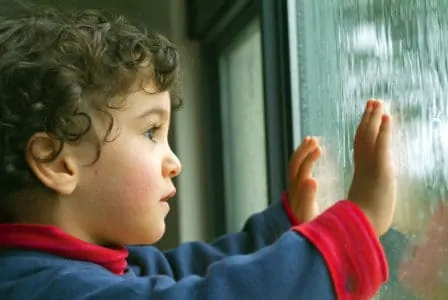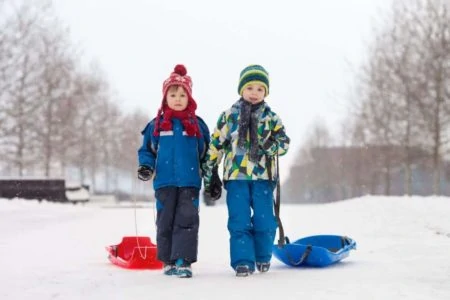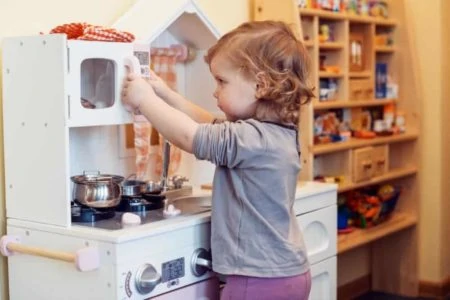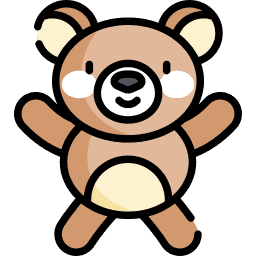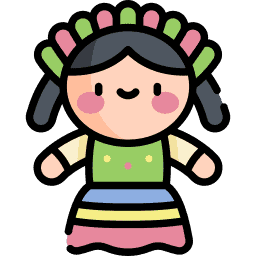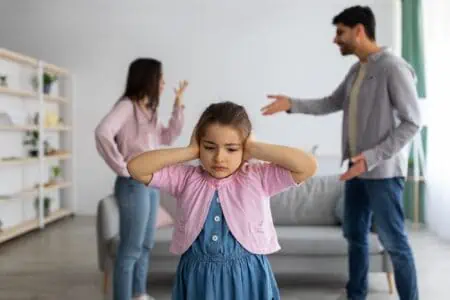Stuck inside with energetic kids? We’ve all been there. When the clouds open up, cabin fever can set in quickly. But a gloomy forecast doesn’t have to mean a boring day. In fact, it’s the perfect excuse to get creative.
We’ve curated 50 exciting, educational, and downright fun rainy day activities for children of all ages. From messy sensory play to cozy reading corners, this list turns “I’m bored” into “Best day ever.”
Key Takeaways
- Water Tray Play: A simple baking sheet with warm water and toys builds fine motor skills and keeps toddlers mesmerized.
- Sticky Webs: Create a tape web in a doorway for a fun, active target practice game using crumpled paper.
- Sensory Dough: Mix cornstarch and oil to make “Snow Dough,” a silky, moldable alternative to store-bought clay.
- Roleplay: Set up a pretend store or restaurant to practice social skills and counting with household items.
Rainy Day Activities For Kids
This list of indoor games for kids is organized by age, starting with simple sensory play for toddlers and moving up to complex crafts for older kids. While we’ve included age suggestions, you know your child best; feel free to adapt these ideas to fit their interests and abilities.
1. Water Tray Play
Age: One year and older.
This is one of the easiest ways to occupy a toddler, and you likely have everything you need right now.
Place a clean baking sheet on the floor over a large towel to catch spills. Fill the tray halfway with warm water (just above body temperature) and drop in a random assortment of plastic items.
Aim for variety. Different sizes, colors, and textures help support fine motor skill development (1). Your little one will love splashing, pouring, and exploring.
2. Sticky Webs
Age: 18 months and older.
Grab some painter’s tape or masking tape, colored paper, and lightweight toys.
Cut strips of tape and place them across an open doorway. Ensure the sticky side faces toward you. Criss-cross the strips to form a large, sticky spiderweb.
Crumple up scrap paper and challenge your child to throw the “flies” at the web to see how many stick. It’s a fantastic way to burn energy and practice hand-eye coordination without breaking anything.
3. Snow Dough
Age: 18 months and older.
If you want a sensory alternative to Play-Doh, try Snow Dough. It feels silky and smells great.
Simply mix one cup of cornstarch (or flour) with roughly 1/3 to 1/2 cup of vegetable oil. Adjust the oil until the dough holds its shape. Toss it in a bin with plastic arctic animals or cookie cutters for hours of texture exploration.
4. Create A Store
Age: 18 months and older.
You don’t need a fancy plastic register to play shop. Clear off a low table, grab some pantry items, and set up a grocery store.
Use Cheerios or paper scraps as currency. Take turns being the cashier and the customer. This classic roleplaying game isn’t just fun; it builds vocabulary, introduces basic math concepts, and teaches social interaction skills.
5. Tape Roadway
Age: 18 months and older.
Painter’s tape is a parent’s best friend. Use it to map out a massive road system on your floor for toy cars.
Don’t stick to boring circles. Run the road under chairs, over the sofa cushions, and through tunnels made of cardboard. Add parking lots, roundabouts, and intersections to make the world feel real.
6. Melting Candy Science
Age: 2 years and older.
Turn snack time into a science experiment. Have your child arrange Skittles or M&Ms in a circle on a white plate.
Slowly pour warm water into the center of the plate until it touches the candy. Watch as the sugar coating dissolves and sends streaks of rainbow colors toward the center. It’s a mesmerizing lesson on solubility and color mixing.
7. Muffin Tin Geoboard
Age: 2 years and older.
This is an excellent hack for fine motor practice. Grab a muffin tin and a handful of rubber bands.
Flip the tin upside down. Show your child how to stretch the rubber bands over the raised cups. Once they get the hang of it, challenge them to create shapes, letters, or geometric patterns.
8. DIY Puzzles
Age: 2 years and older.
Jigsaws and puzzles act as brain food for kids. If you’ve exhausted your supply, make your own.
Glue a family photo or a magazine page onto a cereal box panel. Cut it into shapes appropriate for your child’s skill level. For a sturdier version, glue the image onto popsicle sticks arranged in a row, then slice between the sticks.
9. Host A Toy Party
Age: 2 years and older.
Gather all the stuffed animals and action figures for a VIP event. Create invitations, prepare simple “finger food” snacks, and put on some music.
You can host a tea party, a dance-off, or a birthday party for a favorite teddy bear. If parties aren’t their thing, try setting up a “restaurant” where the toys are the demanding customers.
10. Indoor Obstacle Course
Age: 3 years and older.
Turn the living room into a “Floor is Lava” zone. Use pillows as stepping stones, chairs to crawl under, and masking tape lines to balance on.
Tailor the difficulty to your child’s age. For older kids, add timed challenges (e.g., “Do 5 jumping jacks before crossing the sofa”). It’s the best way to burn off physical energy indoors.
11. What’s In The Box?
Age: 3 years and older.
Cut a hand-sized hole in a shoebox. Without your child looking, place a mystery object inside.
Have them stick their hand in and guess what it is based solely on touch. Start with easy items like a brush or a spoon, then move to trickier textures like cooked spaghetti or peeled grapes for a sensory thrill.
12. Sock Basketball
Age: 3 years and older.
No balls allowed in the house? No problem. Roll up pairs of socks into soft “balls.”
Set up laundry baskets or boxes at different distances. Assign point values to each target. You can also tape numbers to the floor for a math-based target game. It’s quiet, safe, and surprisingly competitive.
13. Kids In The Kitchen
Age: 3 years and older.
Cooking is essentially tasty science. It teaches measurement, following directions, and chemistry.
“Look I’m A Cook” is a great resource for visual recipes. Even if you don’t bake, simple tasks like washing veggies, tearing lettuce, or assembling sandwiches give kids a sense of accomplishment.
14. Cardboard Metropolis
Age: 4 years and older.
Save those delivery boxes. With some markers, scissors, and imagination, they become a sprawling city.
Paint the boxes to look like skyscrapers, fire stations, and houses. Draw roads on a flattened piece of cardboard to connect them. When the city is complete, let the LEGO figures move in, or play “Godzilla” and knock it all down.
15. Make Oobleck
Age: 4 years and older.
Oobleck is a non-Newtonian fluid, meaning it acts like a liquid when poured but a solid when hit. It is messy, fascinating fun.
Mix roughly 2 parts cornstarch to 1 part water. If you punch it, it feels hard. If you relax your hand, it oozes through your fingers. It’s a fantastic sensory experience that doubles as a science lesson.
16. Treasure Hunt
Age: 4 years and older.
Hide a “treasure” (a snack or small toy) somewhere in the house. Then, create a series of clues leading to it.
For non-readers, draw pictures of locations (e.g., a picture of the fridge, then a picture of the bathtub). For older kids, write rhyming riddles. You can also reverse the roles and have them hide the treasure for you to find.
17. Indoor Drive-In Movie
Age: 4 to 10 years.
Upgrade movie night by building “cars” out of laundry baskets or cardboard boxes.
Let the kids decorate their vehicles with paper plate wheels and headlights. Park them in front of the TV, dim the lights, and serve popcorn directly to their car windows. It makes a standard screen-time session feel like an event.
18. Build A Fort
Age: 4 years and older.
The classic blanket fort never goes out of style. Use dining chairs, couch cushions, and sheets to construct a cozy hideout.
Take it a step further by giving it a theme. Is it a medieval castle with a moat? A bear cave? A spaceship? Bring in flashlights and stuffed animals to complete the scene.
19. Snail Mail Workshop
Age: 4 years and older.
In a digital world, getting a physical letter is special. Set up a station with paper, crayons, stickers, and envelopes.
Help your child write letters or draw pictures for grandparents, cousins, or friends. Walk to the mailbox together to send them off. It teaches thoughtful communication and how the postal system works.
20. Pom Pom Projects
Age: 4 years and older.
Making yarn pom-poms is a soothing, repetitive craft. You can use cardboard circles or just a fork to wrap the yarn.
Once you have a pile of fluffy poms, turn them into monsters with googly eyes, string them into a garland, or play “pom-pom hockey” on the table using straws to blow them around.
21. Indoor Camping
Age: 4 years and older.
Pitch a pop-up tent in the living room or drape sheets over the furniture.
Roll out the sleeping bags, turn off the lights, and tell spooky stories by flashlight. You can even make oven s’mores to get that authentic camping taste without the bug bites.
22. Puppet Show
Age: 4 years and older.
Sacrifice a few lonely socks to the craft gods. Glue on yarn hair, button eyes, and felt tongues to create unique characters.
Use the back of the sofa as a stage. Encourage your kids to write a script or improvise a comedy routine. It’s a great way for shy kids to express themselves through a character.
23. Create A Time Capsule
Age: 5 years and older.
Grab a shoe box or a Pringles can and decorate it. Ask your child to choose items that represent their life right now.
Include a drawing, a wrapper from their favorite snack, a current photo, and a note about what they want to be when they grow up. Hide it in the back of a closet with a “Do Not Open Until [Date]” label.
24. DIY Gameshow
Age: 5 years and older.
Recreate “Minute To Win It” or “Jeopardy” at home. The challenges don’t need to be complex.
Try “Stack 10 cups in 30 seconds” or “Move a cookie from your forehead to your mouth without hands.” It’s high-energy, hilarious, and you can even sneak in chores (e.g., “Who can pick up the most Legos in one minute?”).
25. Charades
Age: 5 years and older.
This classic parlor game requires zero equipment. Write simple words (animals, jobs, sports) on slips of paper and toss them in a bowl.
Take turns acting them out without speaking. It gets everyone laughing and helps kids practice non-verbal communication. Need inspiration? Check out our list of charades ideas for kids.
26. Practice Mindfulness
Age: 5 years and older.
Rainy days are perfect for slowing down. Mindfulness helps kids regulate emotions and improve focus (2).
Try “buddy breathing” by placing a stuffed animal on their belly while they lie down, watching it rise and fall with deep breaths. It’s a calming reset button when cabin fever hits.
27. Melted Crayon Art
Age: 5 years and older.
Don’t throw away those broken crayon bits. You can melt them into silicone molds to make “new” chunky crayons, or use a hair dryer to blow melted wax across a canvas for abstract art.
If you have a crayon melter tool, kids can draw with molten wax safely.
28. LEGO Bingo
Age: 5 years and older.
Stuck in a building rut? Gamify your LEGO stash. Write challenges on paper slips (e.g., “Build a car with 4 wheels,” “Make a house with no roof,” “Build something using only blue bricks”).
Draw a slip and race to build it. For inspiration, grab a book like:
29. Learn Magic Tricks
Age: 5 years and older.
Simple card tricks boost confidence and dexterity.
Teach them a basic “pick a card” trick or how to make a coin disappear. It requires patience and practice, which keeps them occupied for a long time. Once they master it, let them put on a show for the family.
30. Future Scrapbooking
Age: 5 years and older.
Instead of documenting the past, document the future. Have your child cut pictures out of magazines of things they want to do, places they want to visit, or pets they want to own.
Glue them into a notebook to create a “Vision Book.” It’s a fun conversation starter about their dreams and goals.
31. Paper-Mache Masks
Age: 5 years and older.
This is a messy, multi-day project that kids love. Blow up a balloon and cover it with newspaper strips dipped in a flour-water glue mixture.
Once dry, pop the balloon and cut the hard shell in half to make two masks. Paint them to look like superheroes, animals, or monsters. See our guide on how to make paper mache for the perfect recipe.
32. Fashion Designer
Age: 5 years and older.
Let your child raid the closet for a fashion show, or keep it low-key with a design challenge.
Trace a silhouette of a person on paper. Give them fabric scraps, foil, ribbon, and glue to “dress” the model. It encourages creativity and texture combining.
33. No-Sew Sock Crafts
Age: 6 years and older.
You don’t need a needle and thread to make cute soft toys. Old socks, rice for filling, and rubber bands are all you need.
Here are a few adorable projects to try:
34. Read Aloud Marathon
Age: 6 years and older.
Reading aloud isn’t just for toddlers. Even older kids benefit from listening to complex stories. It builds vocabulary and bonding time.
Pick a chapter book that is slightly above their reading level. Take turns reading pages, or create an audiobook vibe with funny voices for different characters. Need ideas? Check out our top books for 6-year-olds.
35. Rock Painting
Age: 6 years and older.
If you can find some smooth stones (or buy a bag from a craft store), you have a canvas.
Paint them into ladybugs, kindness rocks with positive words, or story stones. Acrylic paint or paint pens work best. Once the rain stops, you can hide them around the neighborhood for others to find.
36. DIY Band
Age: 6 years and older.
Explore the benefits of music by building your own instruments.
Tissue boxes with rubber bands make great guitars. Rice inside a sealed toilet paper roll makes a shaker. A coffee can is a perfect drum. Form a family band and record your hit single.
37. Start A Journal
Age: 6 years and older.
Journaling is a healthy emotional outlet. Give your child a notebook and some fun pens.
It doesn’t have to be “Dear Diary.” They can make lists (e.g., “Top 10 Ice Cream Flavors”), draw comics, or just doodle. Remind them that a journal is a private space where they can be 100% honest.
38. Spy Training
Age: 6 years and older.
Kids love secrets. Teach them how to write invisible messages using lemon juice (reveal it by holding it near a heat source like a lightbulb).
You can also create a “laser maze” in a hallway using red yarn taped to the walls. They have to navigate through without touching the “lasers.”
39. The Bag Skit
Age: 7 years and older.
Fill a pillowcase with random props: a hat, a spatula, a sunglasses case, and a scarf.
Give your kids 15 minutes to create a skit that uses every item in the bag. The results are usually nonsensical and hilarious. It encourages quick thinking and public speaking in a low-pressure environment.
40. Sharpie Crafts
Age: 7 years and older.
Permanent markers open up a world of cool crafts.
Decorate white canvas sneakers with galaxy patterns. Draw on a ceramic mug and bake it to set the design. Or use rubbing alcohol on Sharpie drawings to create a tie-dye effect on t-shirts.
41. Costume Design
Age: 7 years and older.
Challenge older kids to create a costume using only what they find in the recycling bin.
Can they make superhero armor out of cereal boxes? A robot suit from foil? Resources like The Costume Making Guide can provide inspiration, but imagination is the best tool here.
42. Draw A Comic Book
Age: 7 years and older.
If your child loves graphic novels, have them make their own. You can print out blank comic strip templates or buy a blank comic book.
Help them brainstorm a hero, a villain, and a conflict. It combines creative writing with art skills and keeps them focused for hours.
43. Beaded Bookmarks
Age: 8 years and older.
Upgrade your reading game with custom bookmarks. Use ribbon or leather cord and attach beads or charms to the ends.
These make lovely, functional gifts for teachers or grandparents. It’s a precise craft that’s great for dexterity.
44. Origami
Age: 8 years and older.
Paper folding is the ultimate quiet activity. It requires focus and precision.
Start with a simple boat or crane. You don’t strictly need origami paper, but the thin squares make folding easier. There are thousands of free tutorials online to follow.
45. Shadowbox Theater
Age: 8 years and older.
Cut a rectangle out of a cereal box and tape parchment paper over the opening. Place a lamp behind it, and you have a shadow theater.
Cut puppet silhouettes out of black cardstock and attach them to skewers. It’s a step up from hand puppets and looks surprisingly professional.
46. Paper Bead Jewelry
Age: 8 years and older.
Cut long, thin triangles out of magazines or colorful scrapbook paper. Roll them tightly around a toothpick and secure the end with glue.
Coat them in a little Mod Podge or clear nail polish, and you have hard, colorful beads to string into necklaces. It’s a great way to upcycle junk mail.
47. Kid Entrepreneur
Age: 10 years and older.
Channel their boredom into business. Help them brainstorm a product or service.
Could they sell the beaded bracelets they just made? Start a dog-walking service? Help them design a logo, create a flyer, or calculate how much they need to charge to make a profit.
48. Photography Challenge
Age: 10 years and older.
Give them a smartphone or digital camera and a list of prompts (e.g., “Something red,” “A shadow,” “Water”).
Teach them about lighting and angles. Afterward, help them edit the photos using a simple app. It changes the way they look at their surroundings.
49. Tinker Time
Age: 10 years and older.
Have an old toaster or radio that doesn’t work? Cut the cord (for safety) and let your child take it apart.
Give them screwdrivers and pliers to explore the inner workings. Seeing the circuit boards and gears is fascinating and demystifies how everyday objects function.
50. DIY Spa Day
Age: 10 years and older.
Turn the bathroom into a spa. Make sugar scrubs using sugar and olive oil, or mix up a face mask with yogurt and honey.
It teaches self-care and follows a simple “recipe” format. Plus, you get to enjoy a little pampering too.
FAQs
Activities For Life
Rainy days don’t have to be a wash. Whether you’re building a cardboard city or baking a mess in the kitchen, these moments are about connection.
Some of these ideas might just be a way to kill an hour, but others could spark a lifelong passion for engineering, art, or cooking. So grab the tape, clear the floor, and make some memories.
